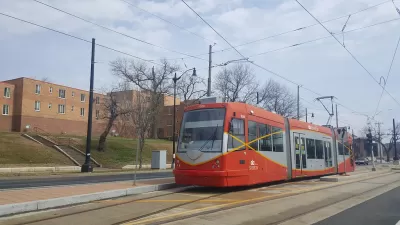A new article in the Journal of Planning Education and Research (@JPER7) by Hongwei Dong of California State University, Fresno, asks whether New Urbanist developments were more resilient in terms of recovering from the 2008 real estate crash.

In the 2000s, it was commonplace to hear from real estate experts that rising home prices were close to a sure bet. However, the 2008 crisis in the U.S. housing market followed by a slow recovery in many metropolitan areas, raised awareness of the real possibility that market downturns can erode home equity.
The question of what planners can do to create communities that are resilient to housing market downturns is receiving increasing attention. Previous cross sectional studies indicate that New Urbanist homes command premiums compared to similar homes in traditional post-war subdivisions. A new article in JPER (free until March 15) by Hongwei Dong of California State University, Fresno, asks whether New Urbanist developments have been more resilient in terms of recovering from the 2008 real estate crash.
Smokey Sky Mall (Image by Twelvizm)
Dong focuses on three counties in Metro Portland, Oregon, where he had access to sales prices for single family homes sold both in the period before the real-estate crash and during the recovery. New Urbanism is often identified as a design movement, but because there are so few New Urbanist developments, Dong investigates a host of land use, transportation, social, and demographic characteristics that relate to design characteristics advocated for by New Urbanists (e.g., street connectivity, land use mix, transit, and greater residential density).
Among the measures analyzed by Dong, mixed land uses did not impact values significantly, and density had a very minimal negative impact. Interestingly, school quality was also slightly negative, which might be explained by pre-bust bubble conditions in good districts. Homes in communities that were close to central Portland had the most price resilience. These were most often single-family homes located in walkable communities, with interconnected street networks, and sidewalks. Interestingly, being near downtown was important, but access to transit was mixed, and areas with only good bus service, without other New Urbanist amenities, showed less resilience.

However, the study suggests that synergistic effects exist between different dimensions of New Urbanist development. Neighborhoods that show not only smarter land use patterns and denser transit service but also good access to light rail transit and high-quality bike routes helped single-family homes sustain their values in the recession.

One interesting future question is whether Portland’s downtown draw is unique. Would it extend to a declining industrial city, such as Detroit, or a sprawling Sun Belt one, such as Atlanta? Finally, New Urbanism is a design movement, and often includes master planned communities. An interesting extension of this research would be to compare the performance of these communities to traditional ones.
Blog post by Thomas Douthat, and Dr. Hongwei Dong of Fresno State.
You can also follow @JPER7 on Twitter or like us on Facebook.com/JPERPlanning.

Alabama: Trump Terminates Settlements for Black Communities Harmed By Raw Sewage
Trump deemed the landmark civil rights agreement “illegal DEI and environmental justice policy.”

Study: Maui’s Plan to Convert Vacation Rentals to Long-Term Housing Could Cause Nearly $1 Billion Economic Loss
The plan would reduce visitor accommodation by 25% resulting in 1,900 jobs lost.

Planetizen Federal Action Tracker
A weekly monitor of how Trump’s orders and actions are impacting planners and planning in America.

Waymo Gets Permission to Map SF’s Market Street
If allowed to operate on the traffic-restricted street, Waymo’s autonomous taxis would have a leg up over ride-hailing competitors — and counter the city’s efforts to grow bike and pedestrian on the thoroughfare.

Parklet Symposium Highlights the Success of Shared Spaces
Parklets got a boost during the Covid-19 pandemic, when the concept was translated to outdoor dining programs that offered restaurants a lifeline during the shutdown.

Federal Homelessness Agency Places Entire Staff on Leave
The U.S. Interagency Council on Homelessness is the only federal agency dedicated to preventing and ending homelessness.
Urban Design for Planners 1: Software Tools
This six-course series explores essential urban design concepts using open source software and equips planners with the tools they need to participate fully in the urban design process.
Planning for Universal Design
Learn the tools for implementing Universal Design in planning regulations.
Caltrans
Smith Gee Studio
Institute for Housing and Urban Development Studies (IHS)
City of Grandview
Harvard GSD Executive Education
Toledo-Lucas County Plan Commissions
Salt Lake City
NYU Wagner Graduate School of Public Service





























